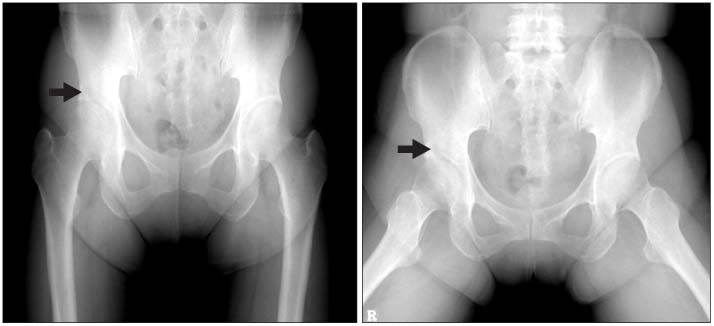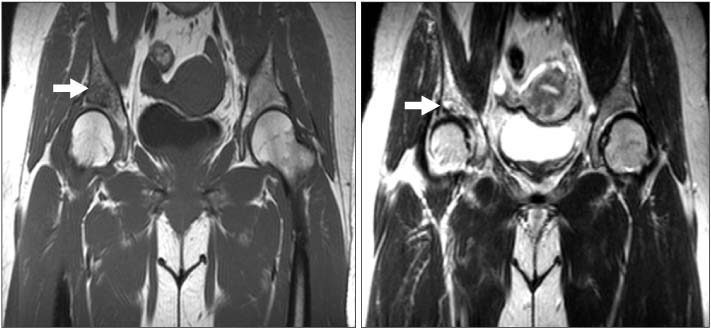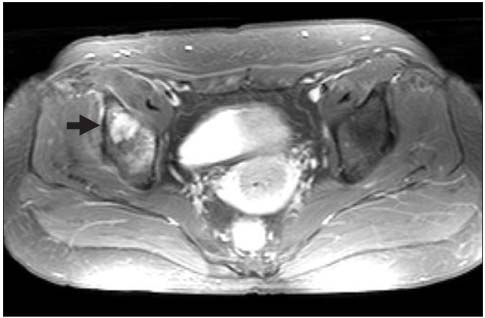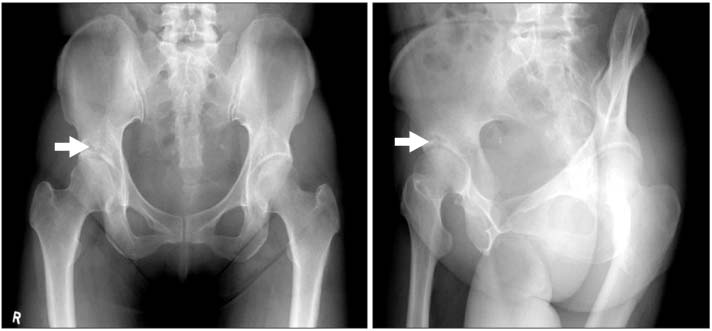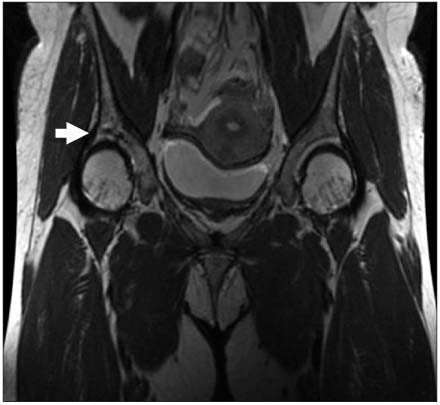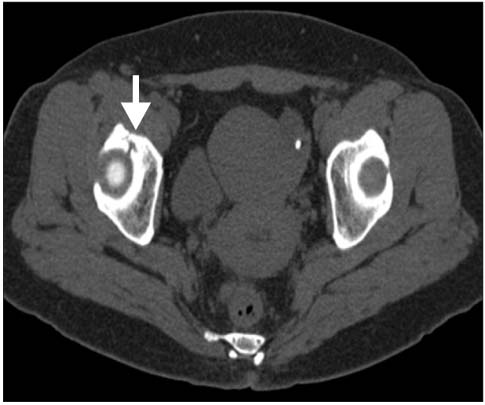J Korean Orthop Assoc.
2010 Apr;45(2):160-163. 10.4055/jkoa.2010.45.2.160.
Pathologic Fracture in a Subchondral Cystic Lesion at the Superior Acetabulum
- Affiliations
-
- 1Department of Orthopedic Surgery, Seoul National University College of Medicine, Seoul, Korea.
- 2Department of Orthopedic Surgery, College of Medicine, Jeju National University, Jeju, Korea. kanguking@yahoo.co.kr
- KMID: 2185586
- DOI: http://doi.org/10.4055/jkoa.2010.45.2.160
Abstract
- Subchondral cyst is a benign cystic lesion, and it is often found in patients with rheumatoid arthritis or osteoarthritis. However, its occurrence in those joints without preexisted disease is rare. Furthermore, there has been no report in the medical literature regarding pathologic fracture in the bony plate of a subchondral cyst at the superior acetabulum. We report here on a case of the 44-year-old woman for whom a pathologic fracture was found in the bony plate of a subchondral cyst at the superior acetabulum.
MeSH Terms
Figure
Reference
-
1. Woods CG. Subchondral bone cysts. J Bone Joint Surg Br. 1961. 43:758–766.
Article2. Schajowicz F, Sainz MC, Slullitel JA. Juxta-articular bone cysts (Intra-osseous ganglia):a clinicopathological study of eighty-eight cases. J Bone Joint Surg Br. 1979. 61:107–116.3. Eggers GWN, Evans EB, Blumel J, Nowlin DH, Butler JK. Cystic change in the iliac acetabulum. J Bone Joint Surg Am. 1963. 45:669–722.
Article4. Motomura G, Yamamoto T, Miyanishi K, Shirasawa K, Noguchi Y, Iwamoto Y. Subchondral insufficiency fracture of the femoral head and acetabulum: a case report. J Bone Joint Surg Am. 2002. 84-A:1205–1209.5. Silas SI, Resnik CS, Levine AM. Bilateral primary cystic arthrosis of the acetabulum. A case report. J Bone Joint Surg Am. 1996. 78:775–778.
Article6. Resnick D. Diagnosis of bone and joint disorders. 1995. 3rd ed. Philadelphia: WB Saunders;3878–3882.
- Full Text Links
- Actions
-
Cited
- CITED
-
- Close
- Share
- Similar articles
-
- Sbuchondral Curettage & Bone Peg Fixation in Osteochondral Fracture of The Talus
- Reduction Technique of Dome Impaction Using the Modified Stoppa Approach: A Technical Note
- Treatment of bone cystic change with femoral head fracture in Neurofibromatosis patient
- Medialization of Cementless Acetabular Components after the Removal of Subchondral Bone in Total Hip Arthroplasty
- Stress fractures in calcaneus and juxtatectal region of the acetabulum : case report

